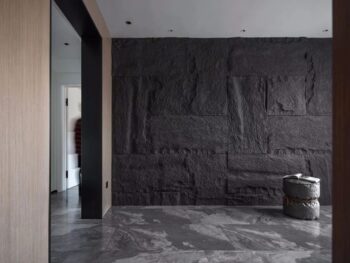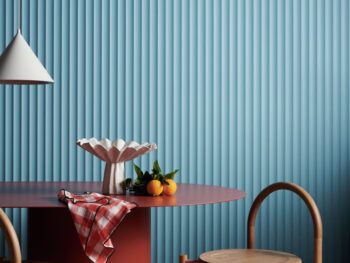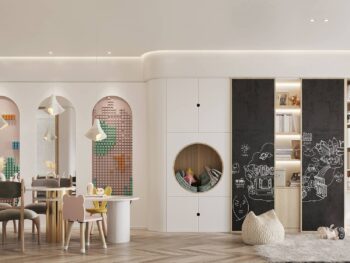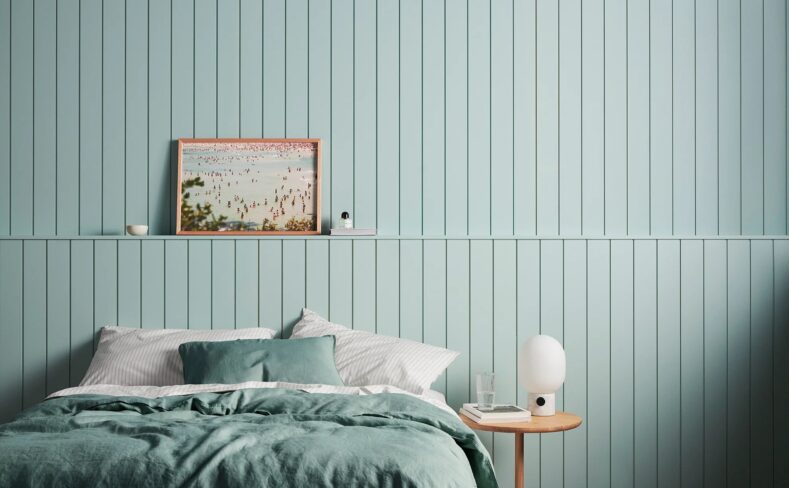
VJ Wall Panel: A Decorative Way to Create Vertical Texture
VJ board, full name “Vertical Joint” board, is a decorative wooden wall panel, which is characterized by the use of vertical joints to create unique textures and effects. VJ boards are usually made of solid wood with natural wood texture and color, which is an ideal choice for pursuing traditional charm and natural beauty in interior decoration.
The design of VJ boards is inspired by traditional architectural styles, especially in regions such as Australia and New Zealand, where it is widely used in Victorian, townhouse and period style homes. This vertically connected design creates a continuous texture, giving the wall an orderly aesthetic, while also emphasizing the vertical visual effect, making the space appear taller.
Please note that this article is to provide you with general information, but specific information about the different types, materials, sizes and suppliers of VJ boards may vary by region and time. If you are looking for a specific VJ Board product or more detailed information, I suggest you do a deeper research on your local building materials market or on the web. If you have any questions, you can also contact us at any time to provide you with consulting services.
This article is to discuss the design features, manufacturing process, applicable style and maintenance methods of VJ wall panels.
Related Articles
A Guide to WPC vs PVC Wall Panels
PVC Wall Panel: Beautiful and Functional Interior Decoration
WPC Wall Panel: Blending Elegance, Functionality and Innovation
I. What is a VJ board?
VJ Board (VJ Board) is a wooden board used for interior decoration, often used for wall covering and decoration. VJ is the abbreviation of “Vertical Joint”, which means that the wooden boards are connected by vertical joints during installation.
VJ boards are usually made of solid or synthetic wood, with a smooth surface and vertical striations. They can be used to cover walls, ceilings, columns and more to add visual appeal and decorativeness to a space. The installation method of the VJ board is usually to connect the boards vertically to form an integral surface, thus presenting longitudinal lines and textures.
VJ panels are widely used in interior decoration, especially in those designs that pursue tradition, rural style or have a classic atmosphere. This kind of board can create a variety of decorative effects by choosing different woods, colors and finishes, from simple to complex, from modern to classic, all can be achieved through VJ boards.
In addition to traditional textures and colors, modern VJ boards are also innovative in design. Designers and manufacturers began experimenting with different cutting, engraving and embossing techniques to create more diverse and unique VJ board effects. This enables VJ boards to adapt to a wider range of interior design styles and meet the needs of different customers.
In general, VJ board is a decorative material full of traditional charm and natural beauty. Through the design of vertical connection, it creates a coherent and unique texture effect. Whether in a classic classic residence or in a modern interior design, the VJ board can add warmth and unique visual charm to the space.
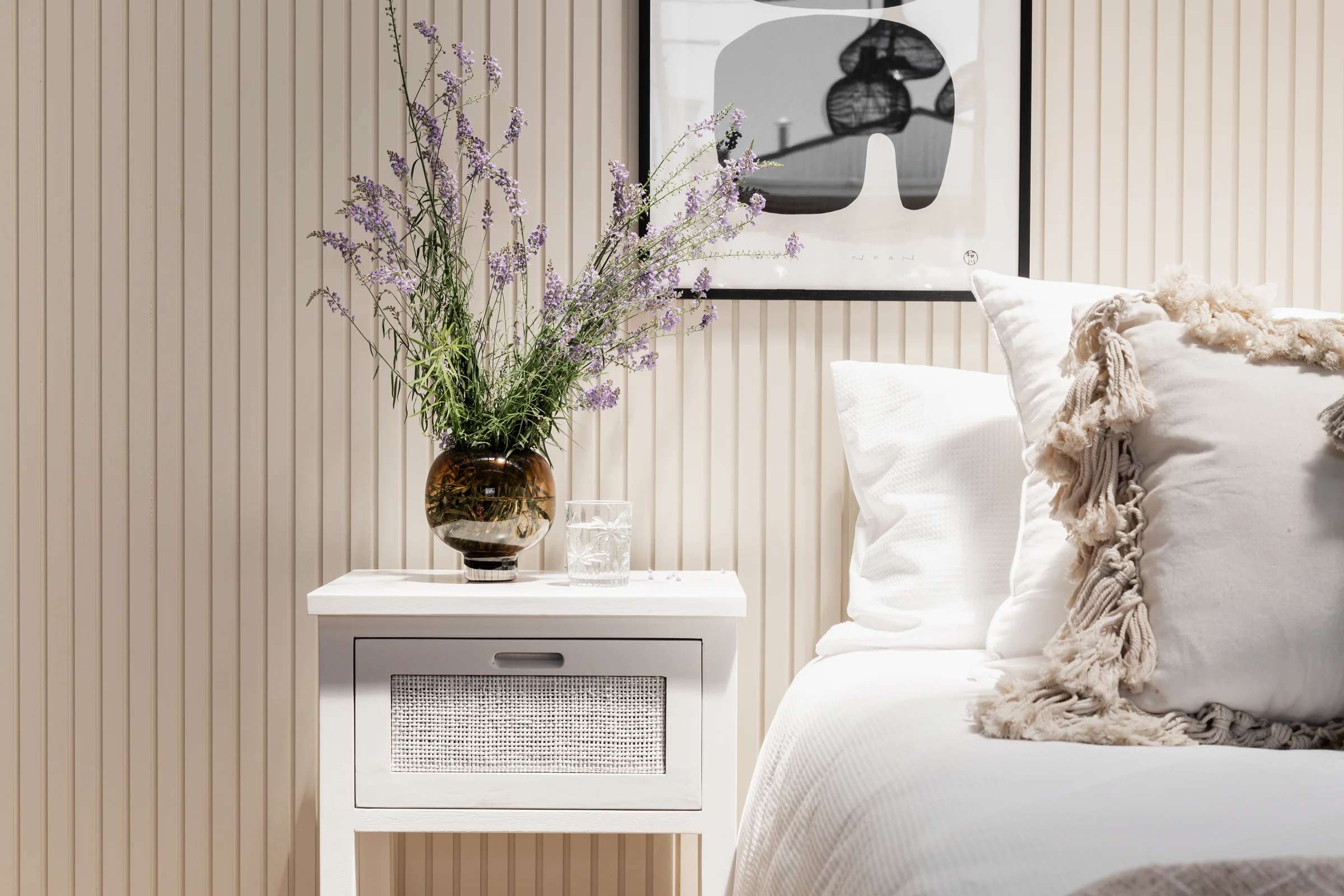
II. Which interior design styles are VJ boards suitable for?
Due to its traditional vertical connection design and natural wood aesthetics, VJ panels are suitable for a variety of interior design styles, adding a unique decorative effect and warmth to the space. Here are some interior design styles that VJ boards are suitable for:
1. Traditional classical style
Originally derived from traditional architectural styles, VJ boards are therefore ideal for interiors in traditional classical styles. In styles such as Victorian, country French or classical American, VJ boards can give a space a touch of tradition and nobility.
2. Country style
The wooden texture and vertical connection design of the VJ board complement the warm and cozy atmosphere of the country style. In rural, pastoral, or country-style decor, VJ boards can create a rustic and fun decorative effect.
3. Retro style
The traditional design of the VJ board echoes some retro styles such as retro industrial and retro ethnic. By choosing the right colors and furniture, a VJ board can help create a unique retro vibe.
4. Modern country style
The modern country style emphasizes comfort and naturalness, and the wood texture and warmth of the VJ board are just in line with it. In modern country style, a VJ board can add some traditional elements to the space.
5. Beach or ocean style
The vertically joined texture of the VJ board can be combined with beachside or ocean-inspired blue and white tones to create a relaxing, tranquil ocean vibe.
6. Modern classic style
The modern classic style pursues the perfect balance between tradition and modernity, the traditional texture of VJ board can be integrated with modern furniture and decorative elements to create an elegant space atmosphere.
It should be noted that although the VJ board has applicability in many styles, the overall atmosphere and design requirements of the space should also be considered when choosing a style. Through reasonable color matching and collocation, VJ boards can create unique decorative effects in different styles.
III. What is the cost of the VJ board?
The cost of VJ boards varies based on a number of factors including material, difficulty of fabrication, manufacturer, wood type, and market region, among others. Here are some factors that affect the cost of a VJ board:
1. Material type
VJ boards can be made from different types of wood such as pine, oak, walnut, etc. Different kinds of wood have different prices, which affect the cost of VJ boards.
2. Wood quality
The quality of the wood also affects the cost. Higher quality wood is usually more expensive, but may also have better appearance and durability.
3. Production difficulty
The process of making a VJ board can vary depending on how difficult it is to make. Complicated design, machining and joining may add to the time and cost of fabrication.
4. Manufacturer
Different manufacturers may have different pricing strategies. Some manufacturers may offer high-quality VJ boards, while others may offer more affordable options.
5. Size and quantity
The size and number of VJ boards will also affect the cost. Larger size panels and larger quantities may increase costs.
6. Region
Price differences in market regions may also affect the cost of VJ boards. Factors such as wood supply and labor costs in different regions will cause price changes.
7. Additional fees
Custom options such as ordering specific colors, finishes, paints, etc. may add to the cost.
With these factors in mind, the cost of a VJ board can vary widely. Generally speaking, the cost of VJ board may be slightly higher than ordinary wall decoration materials, because it is usually made of solid wood, and the production process may also be more complicated. If you are interested in VJ boards, it is recommended to communicate with different manufacturers before purchasing to understand the price and quality of different options, and make a choice according to your budget and design needs.
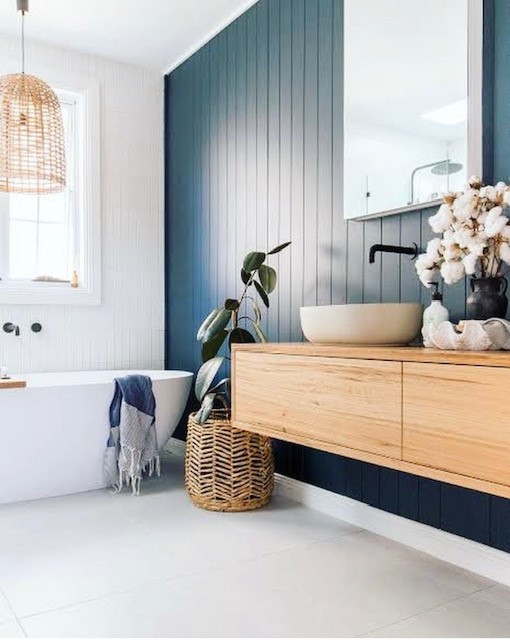
IV. The production process of VJ board
The process of making a VJ board involves multiple steps, including preparing materials, cutting, joining, painting, and more. The following is a brief VJ board production process:
1. Material preparation
First, the required wood needs to be prepared. Usually solid wood is selected as the material for making VJ boards, because solid wood can give VJ boards natural wood texture and color.
2. Cut wood
Cut the prepared wood to the desired size and length. These cut pieces of wood will become the various components of the VJ board.
3. Processing wood
After cutting, the blocks may need to be worked to achieve the vertically joined design. This involves cutting appropriate joint notches into the edges of the blocks for subsequent vertical joints.
4. Vertical connection
Connect the processed wooden blocks vertically to form the basic structure of the VJ board. Connections can be made using glue and nails to secure the pieces of wood, making sure they fit together tightly and form a coherent grain.
5. Fill the gaps
After the connection is complete, some gaps or unevenness may appear. These gaps need to be filled with wood paste or caulk to smooth the surface.
6. Sanding
Sand the surface of the VJ board to make it more smooth and even. This facilitates subsequent painting and trim work.
7. Paint or decorate
Finally, there is the option of painting or other decorative work on the VJ board to add to its appearance and protect the wood. Select the appropriate paint color and finish to suit the needs of the design.
8. Install
The completed VJ board can be installed according to the needs of the design. This may require a professional to ensure that the VJ board is properly and securely mounted to a wall or other location.
It is important to note that the VJ board fabrication process may vary depending on the manufacturer, design needs, and material type. The above steps are only a general guide, and may be adjusted according to specific situations in actual production. Regardless, the process of making a VJ board requires experience and skill to ensure that the final output of the VJ board has a high-quality appearance and durability.
V. What are the advantages and disadvantages of the VJ board?
As a decorative material, VJ board has its own advantages and disadvantages. The following is a detailed introduction about the advantages and disadvantages of VJ boards:
– Advantages
1. Natural beauty
VJ panels are usually made of solid wood, which retains the natural grain, color and texture of the wood, giving the interior space a natural and warm aesthetic.
2. Traditional charm
The design of the VJ board is inspired by traditional architectural styles, and the vertically connected texture echoes the columns and textures in traditional buildings, bringing traditional charm to the interior space.
3. Visual effects
The design of vertical connection makes the wall present a coherent texture, emphasizes the sense of verticality, and enhances the layering and height of the space.
4. Various styles
Although the VJ board is derived from the traditional style, it can also be combined with modern elements to create a variety of styles, from classical to modern, which can be fully displayed.
5. Adapt to different spaces
VJ panels are suitable for various indoor scenes, including living room, bedroom, dining room, corridor, etc., adding unique decorative effects to different spaces.
– Disadvantages
1. Maintenance requirements
Since VJ panels are usually made of solid wood, it may be affected in environments with large changes in humidity and require more maintenance and attention to prevent deformation and cracking.
2. Make complicated
The production of VJ boards involves the design of vertical connections, which requires experienced professionals, so the production process may be more complicated and requires a higher level of craftsmanship.
3. Higher cost
Because VJ boards are usually made of solid wood and are complicated to make, they are relatively expensive and may not be suitable for projects with a limited budget.
4. Style restrictions
Although VJ panels can be combined with modern elements, their traditional vertical connection design may not be suitable for all interior design styles, especially some modern and minimalist styles.
Comprehensive consideration, VJ board has become a favorite decoration choice for many people due to its natural beauty, traditional charm and diverse style adaptability. However, it is important to note that factors such as maintenance, fabrication difficulty, and cost need to be considered when choosing a VJ board to ensure it matches the design needs and budget.
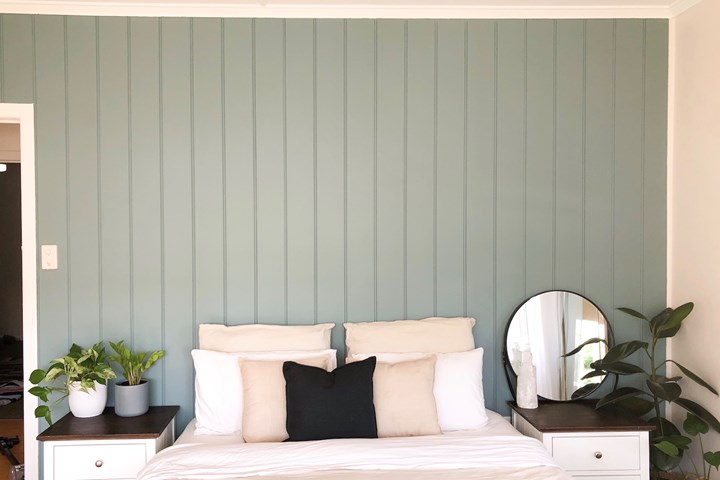
VI. How to clean and maintain the VJ board in daily life?
Cleaning and maintaining your VJ board can help maintain its beauty and durability. The following are suggestions for the cleaning and maintenance of VJ boards in daily life:
Clean:
1. Gently wipe
Use a soft, damp cloth to gently wipe the surface of the VJ board to remove dust, grime, and debris. Avoid using rough cloths or brushes that can scratch the surface.
2. Avoid excessive moisture
Avoid applying too much moisture directly on the VJ board, so as not to affect the texture of the wood and cause deformation. Make sure the damp cloth is not wet.
3. Use a mild cleanser
If you need to use a detergent, choose a mild wood furniture cleaner or a mild detergent mixed with a little warm water. Test on an inconspicuous spot first to make sure the cleaner won’t damage the surface.
Maintain:
1. Keep indoor humidity stable
Solid wood VJ panels are easily affected by humidity, so keeping the indoor humidity stable is very important to maintain the integrity of the VJ panels. Use a humidifier or air conditioner to make sure the humidity is within the proper range.
2. Protect from direct sunlight
Prolonged exposure to strong sunlight may cause discoloration or cracking of the VJ board. Use curtains or blinds to block direct sunlight.
3. Regular nourishment
Regularly condition the VJ board with wood conditioner oil or wax to maintain its surface luster and protect the wood. According to the actual usage, it can be moistened every few months.
4. Avoid the pressure of heavy objects
Avoid placing heavy objects directly on the VJ board as this can scratch or dent the surface.
5. Deal with stains in time
If stains appear on the VJ board, they should be removed as soon as possible. Wipe gently with a soft damp cloth and mild detergent, then wipe clean with a clean damp cloth.
To sum up, regular gentle cleaning and proper maintenance can help keep your VJ board looking good and durable. Avoid excessive moisture, direct sunlight and mechanical damage, and pay attention to the stability of indoor humidity, which will help your VJ board maintain a long-term good condition. If in doubt, it is advisable to seek professional cleaning and maintenance advice.
VI. Conclusion
All in all, as a decorative material, VJ wall panels have significant influence and diverse applications in the field of interior design. Whether in traditional classical residences or modern and fashionable commercial spaces, VJ wall panels have shown their distinctive charm and continue to influence the evolution and innovation of interior design.
Quick Quotation

